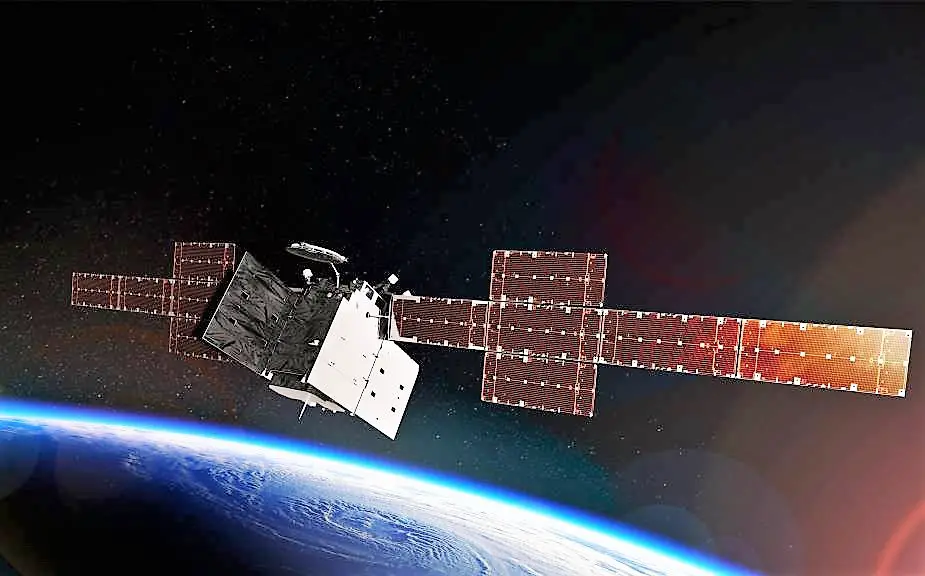Breaking news
Boeing’s new military Protected Wideband Satellite integrates anti-jam payload for enhanced battlefield communication.
Boeing unveiled its Protected Wideband Satellite (PWS) design featuring Boeing’s Protected Tactical SATCOM Prototype (PTS-P) payload hosted aboard the U.S. Space Force’s Wideband Global SATCOM (WGS)-11 spacecraft.
Follow Army Recognition on Google News at this link

The program is scheduled for launch in 2024, with on-orbit testing slated for 2025. After on-orbit demonstration, the PTS-P payload will be available to transition for operational use (Picture source: Boeing)
“The joint force is relying on us to deploy capabilities that enable secure communications in a prolific jamming environment,” said Charlotte Gerhart, Space Systems Command’s Tactical SATCOM division chief at the U.S. Space Force. “We also need mission-relevant speed and affordability, while being mindful of the evolving threat in the battlefield. The Boeing PTS-Prototype payload hosted on WGS-11 is an exciting leap forward for new warfighter capabilities.”
The combination of military satellite communications (MILSATCOM) and anti-jam capabilities underpin the PWS design. Both programs are based on Boeing’s 702X software-driven technology enabling real-time and automated beam-forming for improved stand-off performance and signal protection.
“The Protected Wideband Satellite combines significantly upgraded WGS capability with PTS-P’s automated anti-jam features,” said Michelle Parker, vice president of Boeing’s Space Mission Systems. “This capability sets the stage for future generations of protected wideband systems that can operate in both legacy transponded and new onboard processed modes.”
The program is scheduled for launch in 2024, with on-orbit testing slated for 2025. After on-orbit demonstration, the PTS-P payload will be available to transition for operational use.
The PTS-P design features automated anti-jam capabilities, including jammer geolocation, real-time adaptive nulling, frequency hopping and other techniques, harnessing the power of the U.S. military’s Protected Tactical Waveform (PTW) to ensure the warfighter can stay connected in a contested environment.
By flying PTS-P on the WGS-11 spacecraft as part of the WGS constellation, PWS works seamlessly with all the existing WGS user terminals, while allowing gradual fielding of PTW modems in a theater of operation.
WGS provides the Department of Defense with a broad majority of tactical communications going through the constellation that currently includes 10 satellites.
Defense News April 2023

























